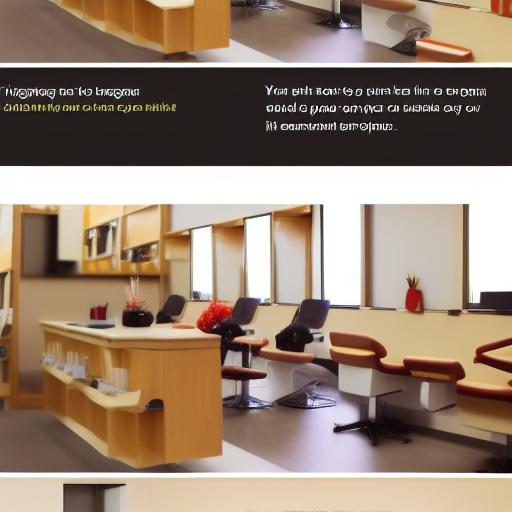
Choosing the perfect location for your salon is a crucial decision that can significantly impact your success. It’s a balancing act between visibility and tranquility, high foot traffic and a relaxing atmosphere. This comprehensive guide will delve into the pros and cons of high-traffic areas versus quieter spaces, helping you make an informed decision for your salon’s location.
I. Understanding Your Target Market: The Foundation of Location Choice
Before even considering high-traffic streets or secluded havens, you must deeply understand your target clientele. Who are you trying to attract? Are they busy professionals seeking quick, convenient services? Or are they individuals seeking a luxurious, tranquil escape?
A. Defining Your Ideal Client:
- Demographics: Age, gender, income level, occupation, lifestyle.
- Psychographics: Values, interests, attitudes, lifestyle choices.
- Service Preferences: What specific services are they seeking? (Haircuts, coloring, styling, manicures, pedicures, waxing, etc.)
- Spending Habits: Are they budget-conscious or willing to spend more for premium services?
B. Conducting Market Research:
- Competitor Analysis: Identify existing salons in potential areas. Analyze their pricing, services, target market, and success. Are there gaps in the market you can fill?
- Customer Surveys: Conduct online and offline surveys to gather direct feedback on preferred salon locations and amenities.
- Demographic Studies: Utilize census data and other demographic information to understand the population density and characteristics of different areas.
Example: If your salon focuses on luxury services and a high-end clientele, a quiet, upscale neighborhood might be more suitable than a bustling shopping mall. Conversely, a salon offering quick, affordable haircuts might thrive in a high-traffic area with easy accessibility.
II. High-Traffic Areas: The Pros and Cons
High-traffic areas, such as shopping malls, busy streets, and commercial centers, offer significant advantages but also come with their challenges.
A. Advantages of High-Traffic Locations:
- Increased Visibility: High foot traffic translates to more potential customers seeing your salon. A prominent location significantly boosts your brand awareness.
- Convenience: Easy accessibility for clients, often with ample parking.
- Synergy with Other Businesses: Locating near complementary businesses (e.g., boutiques, cafes) can attract a shared customer base.
- Higher Potential for Walk-in Clients: Spontaneous visits contribute to consistent revenue streams.
B. Disadvantages of High-Traffic Locations:
- Higher Rent: Prime locations typically command higher rental costs, impacting your profitability.
- Competition: You’ll likely face stiffer competition from established salons in the same area.
- Noise and Distractions: The constant hustle and bustle might create a less relaxing atmosphere for clients and staff.
- Parking Challenges: Despite potential availability, parking might be limited or expensive, deterring some clients.
Example: A salon located in a busy shopping mall benefits from high visibility and convenient access but may face higher rent and increased competition from other salons and businesses.
III. Quiet Spaces: The Pros and Cons
Quiet spaces, such as residential areas or less commercialized streets, offer a different set of advantages and disadvantages.
A. Advantages of Quiet Locations:
- Lower Rent: Rent in less commercial areas is generally more affordable, allowing for higher profit margins.
- Tranquil Atmosphere: A peaceful environment fosters relaxation and enhances the client experience.
- Stronger Community Ties: Building relationships with local residents can cultivate a loyal customer base.
- Reduced Competition: Fewer salons might mean less direct competition.
B. Disadvantages of Quiet Locations:
- Lower Visibility: Reaching potential clients might require more active marketing efforts.
- Limited Foot Traffic: Reliance on targeted marketing and word-of-mouth referrals.
- Accessibility Challenges: Parking might be limited or inconvenient for some clients.
- Slower Growth Potential: Building a clientele might take longer compared to a high-traffic area.
Example: A salon located in a quiet residential neighborhood might offer a tranquil atmosphere and lower rent but may need to invest more in marketing to attract clients.
IV. Analyzing Specific Location Factors
Beyond the broad categorization of high-traffic versus quiet spaces, consider these crucial factors when selecting your salon’s location:
A. Accessibility and Parking: Sufficient parking is essential for client convenience. Consider proximity to public transportation if parking is limited.
B. Demographics and Psychographics: Does the area’s population match your target market? Analyze the age, income, and lifestyle of residents.
C. Visibility and Signage: Ensure your salon is easily visible from the street with clear and attractive signage.
D. Competition: Analyze the existing competition in terms of services, pricing, and target market. Identify any gaps you can fill.
E. Lease Terms and Conditions: Carefully review the lease agreement, paying attention to rent, lease duration, and renewal options.
F. Neighborhood Safety and Security: Ensure the area is safe and well-lit, particularly for evening appointments.
V. Developing Your Location Strategy: A Step-by-Step Guide
- Define Your Ideal Client: Clearly identify your target market’s demographics and psychographics.
- Conduct Market Research: Analyze the competition, demographics, and customer preferences in potential areas.
- Create a Shortlist of Potential Locations: Consider both high-traffic and quiet spaces, weighing the pros and cons.
- Assess Location Factors: Evaluate accessibility, parking, visibility, competition, and lease terms.
- Develop a Financial Projection: Estimate your start-up costs, operating expenses, and projected revenue for each location.
- Make Your Decision: Choose the location that best aligns with your target market, budget, and business goals.
VI. Marketing Your Salon in Different Locations
Your marketing strategy will need to adapt to the location you choose.
A. High-Traffic Areas: Focus on building brand awareness through eye-catching signage, local partnerships, and online advertising.
B. Quiet Spaces: Invest in targeted marketing campaigns, community engagement, and word-of-mouth referrals. Consider local partnerships with complementary businesses.
VII. Learn Business: Your Partner in Salon Success
Choosing the right location is just one piece of the puzzle. To succeed, you need comprehensive business planning, marketing strategies, and financial management. Learn Business (https://learn-business.org) offers invaluable resources to help you navigate the complexities of running a salon. They provide guidance and templates tailored to specific business needs, including:
- Business Plan Templates: Create a detailed business plan outlining your salon’s goals, strategies, and financial projections.
- Marketing Strategies: Develop effective marketing plans to reach your target clientele, regardless of your location.
- Financial Management Tools: Track your income, expenses, and profitability to ensure your salon’s financial health.
- Legal and Regulatory Compliance: Understand and adhere to all relevant legal and regulatory requirements for your salon.
Learn Business provides the tools and knowledge to empower you to make informed decisions, overcome challenges, and achieve your salon’s full potential. Their resources can greatly enhance your chances of success, regardless of whether you opt for a high-traffic or quiet location.
VIII. Conclusion: Finding the Perfect Balance
The decision of where to open your salon involves careful consideration of your target market, budget, and long-term goals. There’s no one-size-fits-all answer; the ideal location will depend on your specific circumstances. By understanding the advantages and disadvantages of both high-traffic areas and quiet spaces, conducting thorough market research, and leveraging resources like Learn Business, you can confidently choose the location that sets your salon up for success. Remember, the perfect location isn’t just about foot traffic; it’s about finding the sweet spot that attracts your ideal clients and allows your business to thrive. Thorough planning, coupled with a solid understanding of your market and the tools available to support your venture, will significantly improve your chances of success. Don’t rush this crucial decision; take your time, analyze your options meticulously, and build your dream salon in the perfect spot.


Leave a Reply